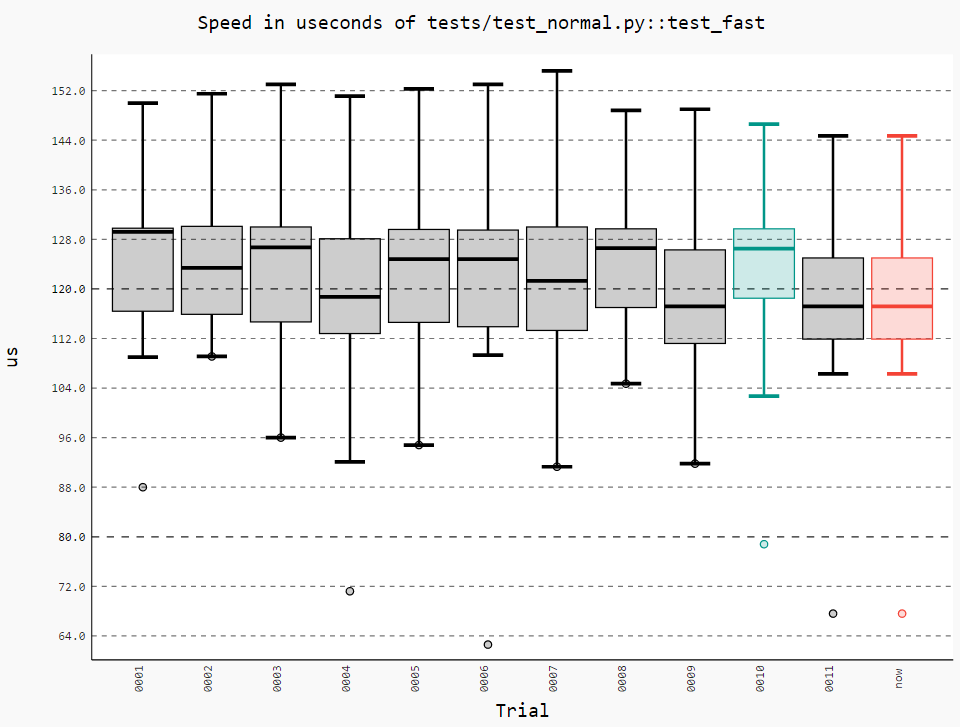Comparing past runs¶
Before comparing different runs it’s ideal to make your tests as consistent as possible, see Frequently Asked Questions for more details.
pytest-benchmark has support for storing stats and data for the previous runs.
To store a run just add --benchmark-autosave or --benchmark-save=some-name to your pytest arguments. All the files are
saved in a path like .benchmarks/Linux-CPython-3.4-64bit.
--benchmark-autosavesaves a file like0001_c9cca5de6a4c7eb2_20150815_215724.jsonwhere:0001is an automatically incremented id, much like how django migrations have a number.c9cca5de6a4c7eb2is the commit id (if you use Git or Mercurial)20150815_215724is the current time
You should add
--benchmark-autosavetoaddoptsin you pytest configuration so you dont have to specify it all the time.--benchmark-name=foobarworks similarly, but saves a file like0001_foobar.json. It’s there in case you want to give specific name to the run.
After you have saved your first run you can compare against it with --benchmark-compare=0001. You will get an additional
row for each test in the result table, showing the differences.
You can also make the suite fail with --benchmark-compare-fail=<stat>:<num>% or --benchmark-compare-fail=<stat>:<num>.
Examples:
--benchmark-compare-fail=min:5%will make the suite fail ifMinis 5% slower for any test.--benchmark-compare-fail=mean:0.001will make the suite fail ifMeanis 0.001 seconds slower for any test.
Plotting¶
Note
To use plotting you need to pip install pygal pygaljs or pip install pytest-benchmark[histogram].
You can also get a nice plot with --benchmark-histogram. The result is a modified Tukey box and wiskers plot where the
outliers (the small bullets) are Min and Max.
Example output:

